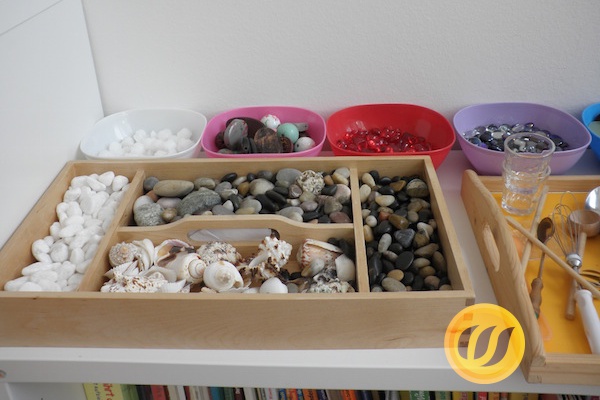Invitation to an exploration of the senses in the wonder workshop: highly concentrated and content hours have been spent here with pouring, transferring, rummaging around and sorting.
This is our introduction into the world of senses and wonders as well as to free, unstructered open-ended play.

Introduction
In 1972 the architect Simon Nicholson created the 'Theory of Loose Parts' in which infinitely more opportunities to learn are created than with static materials and surroundings.
The tinker tray or our solutions offer a lot of possibilities for the children to discover and experience the world. Depending on your childs age and developement you would need to adjust the materials on offer. Watch your children and find out what fascinates and captures and entices them.

Things needed
- Bowls, bottles and cups (various materials: glass, plastic, wood, metal)
- discarded cutlery tray
- tray
- Tools (tongs, spoon, coffee scoop, chopsticks, funnel)
- Odds and ends: shells, stones, wood beads, acrylic beads, glass nuggets, foam shapes, buttons, craft sticks, mosaic tiles, ...)

Steps
Divide the material into bowls and boxes, lay the tools out - ready!
I made an effort to offer different stimuli, meaning objects, which not only differ in colour but also have differnt shapes and materials. Thereby the children can experiment with seeing, feeling and hearing.
To stop the 'wunderwerkstatt' from being overloaded and to keep it interessting, I have rotated the materials regularly (on the picture you see everything at the same time).
No time to make your own?
You can't buy a readymade version, but I have some suggestions to start with:
Next step: deepening knowlegde, following interests:
- Interests: Shapes Colors Patterns
- Skills: Fine motor skills Pincer grip
- Type of play: free open-ended play

